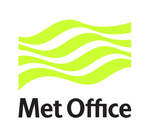
| Met Office Hadley Centre observations datasets |
| > Home > CRUTEM4 > Versions > |
This page describes updates in CRUTEM4 version CRUTEM.4.4.0.0. Previous versions of CRUTEM4 can be found here. Data for CRUTEM.4.4.0.0 can be found here.
Principal changes to the CRUTEM archive (post-CRUTEM.4.3.0.0), within the period April 2014 to June 2015 are listed below:
13 series from Greenland, and the Faroes were updated using sources from DMI (Danish Meteorological Institute) and data held at the Climatic Research Unit - see:
Data series for 30+ stations in Argentina (National Institute of Agriculture) were downloaded from the ISTI (International Surface Temperature Initiative) daily archives at ftp://ftp.ncdc.noaa.gov/pub/data/globaldatabank/daily/stage2/. After processing, 22 of the series (that were not close to existing stations) were merged with CRUTEM.
Following the download of the WMSSC (World Monthly Surface Station Climatology) dataset from the ISTI monthly archive (ftp://ftp.ncdc.noaa.gov/pub/data/globaldatabank/daily/stage2/), ten series were merged with CRUTEM. Six of these are from Sri Lanka and the rest from Iberia and Turkey.
Data (originally from the Japan Meteorological Agency), for 157 stations was downloaded from the ISTI daily archive (ftp://ftp.ncdc.noaa.gov/pub/data/globaldatabank/daily/stage2/). The series were merged with CRUTEM.
The ECA&D Project (http://eca.knmi.nl/) collect, analyse and redistribute climate data for greater Europe (the region extends from Greenland to the Russian Federation and includes parts of the Middle East and north Africa (http://eca.knmi.nl/countries/country_overview.php). Unblended (single station series not augmented with data from nearby stations) and non-homogenized monthly temperature series were provided by ECA&D for use in CRUTEM. Over 2800 series were received. After processing, 1357 series that offered useful additions to CRUTEM were merged.
The annual (approximately) exercise of downloading the USHCN series (http://www.ncdc.noaa.gov/oa/climate/research/ushcn/daily.html) has been conducted. The file downloaded (ushcn.v2.5.0.20150216.tar.gz) produced 1218 series for merger with CRUTEM (in line with similar exercises in recent years)
An extensive exercise that is described at: http://www.ncdc.noaa.gov/oa/climate/research/ghcn/colonialarchive.html has made a large number of ex-colonial (colonial era) temperature data series available in electronic format. The series used in the current exercise were downloaded from the ISTI monthly archive (ftp://ftp.ncdc.noaa.gov/pub/data/globaldatabank/daily/stage2/).
Most of the series acquired are historic (colonial era) and end in the 1960s. This effectively means that only those series that match with existing CRUTEM series (that have sufficient data in the 1961-90 period to produce temperature normals) actually produce gain in the sense of enhancing pre-1961 CRUTEM gridded derivatives. However, some of the ex-colonial series, with data beyond 1960, have enhanced 1961-90 data holdings and thus, in some cases, allowed previously excluded series to now have sufficient 1961-90 data for normals production.
The number of series actually merged with CRUTEM is 264. There may be scope to gain more from the colonial archive through a more detailed and partly manual matching process with known, post-colonial observing locations.
Monthly series were downloaded from the BoM (Bureau of Meteorology) facility at http://www.bom.gov.au/climate/change/acorn-sat/. The ACORN-SAT dataset, as it is known, holds long and homogenized climate series for the Australian mainland and some offshore territories. With the number of station series having remained constant at 112 mainland and eight offshore territories, (since the 2014 exercises), 120 Tmean series were merged with CRUTEM. This exercise serves to update the CRUTEM series to the end of 2014.
The Canadian homogenized climate series (see https://ec.gc.ca/dccha-ahccd/default.asp?lang=en&n=70E82601-1) were received directly from Environment Canada. The network of stations has remained the same since 2014, thus, the exercise was essentially an updating one. 338 updated station series were merged with CRUTEM.
Long climate datasets have been produced through a collaboration between the national meteorological agencies that cover the Pyrenees region. The Project is described at: http://www.opcc-ctp.org/es/acciones/clima. Monthly temperature series were received directly through the Meteorological Service of Catalonia (SMC). Most of the series were new to CRUTEM and received pseudo-WMO ID codes. 38 series were merged with CRUTEM.
Climate series were provided to the ISTI initiative by the Universidad de la Republica, Uruguay. The daily series were downloaded from the ISTI daily archive - ftp://ftp.ncdc.noaa.gov/pub/data/globaldatabank/daily/stage2/ . After processing, 11 series were merged with CRUTEM.
Following an assessment of CRUTEM holdings in southern Africa, attempts were made to enhance holdings for the region using a combination of potential data sources. These include:
The number of series merged with CRUTEM, after the use of the above listed sources, is 94. The main gains from the actions for southern Africa are an increased number of stations in the region producing normals and thus improved station density in the period before 1991 rather than that since 1990.
The following diagnostic plots show comparisons of global and hemispheric time series for CRUTEM.4.4.0.0 (current version) and CRUTEM.4.3.0.0 (previous release).
Commercial and media enquiriesYou can access the Met Office Customer Centre, any time of the day or night by phone, fax or e-mail. Trained staff will help you find the information or products that are right for you. |
 |
Maintained by: Colin Morice |
© Crown Copyright |